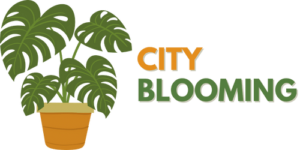Everything about City Blooming
Everything about City Blooming
Blog Article
City Blooming Fundamentals Explained
Table of ContentsCity Blooming Fundamentals ExplainedThe Only Guide to City BloomingWhat Does City Blooming Do?City Blooming Things To Know Before You BuyThe 25-Second Trick For City Blooming
Interested in expanding food to buy in the City of Chicago? Considering starting a community yard? Modifications to the Chicago Zoning Statute allow agricultural usages like neighborhood gardens and city ranches in lots of parts of the city. Below is a list of regularly asked questions regarding the guidelines and laws that growers must think about when intending an urban agriculture task.
The zoning modification does not change any other codes managing composting, structure authorizations, acquiring or renting City had residential or commercial property, service licenses or environmental contamination. There are existing codes that manage these issues and they remain in complete effect and may be relevant to your job. Community yards are typically possessed or managed by public entities, civic companies or community-based companies and maintained by volunteers.
Urban ranches grow food that is intended to be offered, either on a nonprofit or for-profit basis. Because of their industrial objective, urban farms require an organization certificate. Yes. A neighborhood garden is enabled to sell excess generate that was grown on website if the sales are accessory or subordinate to the yard's main function explained over.
More About City Blooming
Composting is permitted but only for plant product that is generated and used on site. The quantity of compost material can not surpass 25 cubic yards at any kind of given time according to the criteria in 7-28-715 of the City's Municipal Code. Yes. Because the soil at the majority of new garden sites requires modifying, garden compost, dirt, timber chips, or various other products can be gotten to create or boost the growing room - urban gardening.

If a structure license is needed then the hoophouse will be taken into consideration an accessory structure. You can figure out even more about the structure permit needs by getting in touch with the Division of Buildings. The 25,000-square-foot size limit is meant to avoid a single community garden from dominating a given block or interfering with the block's existing property or business character.
The restriction does not relate to yards located in Public Open Area (POS) areas. Can there be greater than one neighborhood garden that is 25,000 square feet on a single block? Yes. The size limit puts on specific gardens, not to specific blocks. No. Secure fencing is not required, however, yards that have big car parking locations may be required to mount fencing or other landscaping attributes.
The Ultimate Guide To City Blooming
B1 & B2 districts require that all industrial usage tasks be performed indoors. Is fence required for metropolitan ranches? Fences may be called for, along with landscape design and testing, for certain vehicle parking locations and exterior job or storage space locations depending on place and the particular task taking place.
Yes. Urban farms call for building authorizations and zoning authorizations before construction. Various other forms of city review might be called for depending on specific structures, tasks, size, landscape design, licensing, public heath and stormwater monitoring issues. Most of these needs are recognized in the task style or allowing procedure, nevertheless, the candidate might be responsible to independently recognize specific licenses or permits that might be required.
Yes. The type of certificate is established by what is occurring at the website. The Department of Organization Matters and Customer Security can aid figure out the particular kind of service permit that's needed. Yes. Off street car park is required for most business tasks in Chicago. The called for variety of garage is based on the variety of employees servicing site and not the square video footage of the growing area.
How City Blooming can Save You Time, Stress, and Money.

An urban farm can offer compost material produced on site, nevertheless, the procedure needs to comply with the policies in 7-28-715 of the Chicago Municipal Code. Aquaponic systems are enabled indoors on metropolitan farms in several zoning areas.
As much as five hives or nests of honey bees may be kept as an accessory usage. Beekeepers must sign up with the Illinois Department of Agriculture. To find out more concerning the recommended zoning modification you might contact the Department my review here of Real Estate and Economic Growth, Bureau of Planning and Zoning at 312.744.8563.
Farming in cities and urban areas A metropolitan farm in Chicago. Urban farming describes different practices of cultivating. https://clean-gondola-5c7.notion.site/City-Gardening-Transforming-Urban-Spaces-7213d2fdc6c341e8bd8975e4c2f79126?pvs=4, processing, and dispersing food in city locations. The term also applies to the area tasks of animal husbandry, aquaculture, beekeeping, and cultivation in a metropolitan context. Urban farming is identified from peri-urban farming, which takes area in country locations at the side of suburbs.
City Blooming Things To Know Before You Get This
, who seek to create social networks established on a shared values of nature and neighborhood holism. These networks can create by method of official institutional support, becoming integrated right into neighborhood community planning as a "shift community" activity for sustainable metropolitan development.
Some of the very first proof of metropolitan agriculture comes from Mesopotamia.
Report this page